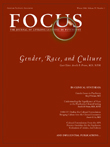The Role of Estrogen in Schizophrenia: Implications for Schizophrenia Practice Guidelines for Women
Abstract
Objective: The objective of this paper is to integrate what is known about estrogen effects on symptoms and treatment response into a global understanding of schizophrenia. The aim is to expand Canadian schizophrenia guidelines to include the specific needs of women. Method: We searched the Medline database; keywords included estrogen, estrogen replacement therapy, schizophrenia, psychosis, treatment, tardive dyskinesia (TD), and women. We examined reference lists from relevant articles to ensure that our review was complete. We review the evidence for the effects of estrogen in schizophrenia and we make recommendations for the next revision of official practice guidelines. Results: The epidemiologic evidence suggests that, relative to men, women show an initial delay in onset age of schizophrenia, with a second onset peak after age 44 years. This points to a protective effect of estrogen, confirming animal research that has documented both neurotrophic and neuromodulatory effects. Clinical research results indicate that symptoms in women frequently vary with the menstrual cycle, worsening during low estrogen phases. Pregnancy is often, though not always, a less symptomatic time for women, but relapses are frequent postpartum. Some work suggests that in the younger age groups women require lower antipsychotic dosages than men but that following menopause they require higher dosages. Estrogen has been used effectively as an adjunctive treatment in women with schizophrenia. Estrogen may also play a preventive role in TD. Conclusions: Symptom evaluation and diagnosis in women needs to take hormonal status into account. Consideration should be given to cycle-modulated neuroleptic dosing and to careful titration during pregnancy, postpartum, and at menopause. We recommend that discretionary use of newer neuroleptic medication and adjuvant estrogen therapy be considered.



